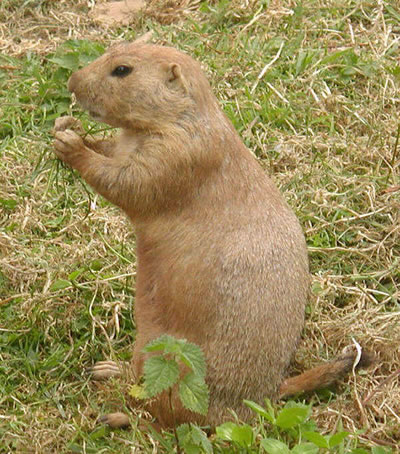The Earth’s temperate zones are located between the tropics and the polar regions. North of the equator, the temperate zone is located between the Tropic of Cancer and the Arctic Circle. The Earth’s southern temperate zone lies between the Tropic of Capricorn and the Antarctic Circle.
Usually, temperate climates are said to exist between about 30 or 40 degrees latitude and about 50 or 60 degrees latitude, between subtropical and subarctic/subantarctic zones.
This region rarely experiences extremes in temperature.
The term “temperate” is often used to refer to a climate that is neither very hot, very cold, very wet nor very dry.
However, there are deserts in the temperate zone. Mid-latitude deserts are located far inland and receive little rain. The Gobi Desert is an example of a mid-latitude desert.
Temperate Deciduous Forests
Temperate deciduous forests are characterized by changing weather conditions
In the northern hemisphere, temperate deciduous forests can be found south of the taiga, in Europe, Asia and North America. There are also temperate deciduous forests in Chile and Paraguay, in South America, and in New Zealand and Australia.
Many different species of trees live in temperate deciduous forests.
The tallest trees of these trees form a canopy.
However, since the leaves of deciduous trees tend to be thin, they do not prevent light from reaching the lower layer of trees - the understory.
A layer of shrubs often grows beneath the understory.
Mosses and ferns grow close to the ground.
In the summer, the days are long and the sun is high in the sky. This means that living things can receive a great deal energy from the Sun.
Squirrels, which live in the treetops, gather food from the ground
Roe deer feed on shrubs and low tree branches.
Birds such as goldcrests, flycatchers, treecreepers and woodpeckers eat insects, which can be found in all layers of the forest.
Badgers, which are omnivorous, eat many different things, including mammals, small insects and acorns.
In the autumn, leaves on the trees change color - becoming orange, red, copper and brown. Eventually, they fall to the ground, along with nuts and acorns.
Squirrels and some other mammals store food in the autumn.
Others mammals form thick layers of fat and then hibernate.
Reptiles also hibernate.
Many birds migrate to the tropics.
In the winter, when water in the soil is frozen, the deciduous trees, which are now leafless, do not lose much water.
Most mammals become less active.
Birds look for insect eggs and dormant insects in crevices in tree bark
When spring comes, many herbaceous plants grow on the forest floor. They quickly grow leaves and flower.
These plants finish their photosynthesis for the year by the time leaves have grown back on the trees. With food stored in roots and underground stems, they disperse their seeds.
Temperate Grasslands
Temperate grassland can be found in the Earth's middle latitudes, in places where there is not enough rainfall for forests to grow.
The dominant plant forms in temperate grasslands are grasses rather than trees.
Since both temperate grasslands and temperate deciduous forests are found in the same latitudes, they receive a similar amount of energy from the sun.
However, the amount of precipitation (rain and snowfall) is lower in temperate grasslands.
In North America, temperate grassland stretches from the Great Lakes and the Mississippi River in the in the east to the Rocky Mountains in the west, and is known prairie or plains.
The temperate grasslands in South America are known as pampas. They can be found in southern Brazil, Uruguay and Argentina.
The steppes of eastern Europe and central Asia and the veld (veldt) of South Africa are also temperate grassland.
Many different types of animals live in temperate grasslands.
 Mammals include cows, sheep, horses, rabbits, deer, coyotes, foxes, prairie dogs, wolves, badgers, squirrels, zebras, gazelles, rhinoceroses and lions.
Mammals include cows, sheep, horses, rabbits, deer, coyotes, foxes, prairie dogs, wolves, badgers, squirrels, zebras, gazelles, rhinoceroses and lions.
Some temperate grassland birds are hawks, owls, meadowlarks, quails and sparrows.
As in temperate deciduous forests, the energy supply in temperate grasslands is reduced in winter, so at that time animals become less active.
In winter, most rodents hibernate.
Insects often remain in the egg stage or in dormant, immature forms.
However, the amount of precipitation (rain and snowfall) is lower in temperate grasslands.
In North America, temperate grassland stretches from the Great Lakes and the Mississippi River in the in the east to the Rocky Mountains in the west, and is known prairie or plains.
The temperate grasslands in South America are known as pampas. They can be found in southern Brazil, Uruguay and Argentina.
The steppes of eastern Europe and central Asia and the veld (veldt) of South Africa are also temperate grassland.
Many different types of animals live in temperate grasslands.
Mammals include cows, sheep, horses, rabbits, deer, coyotes, foxes, prairie dogs, wolves, badgers, squirrels, zebras, gazelles, rhinoceroses and lions.
Some temperate grassland birds are hawks, owls, meadowlarks, quails and sparrows.
As in temperate deciduous forests, the energy supply in temperate grasslands is reduced in winter, so at that time animals become less active.
In winter, most rodents hibernate.
Insects often remain in the egg stage or in dormant, immature forms.